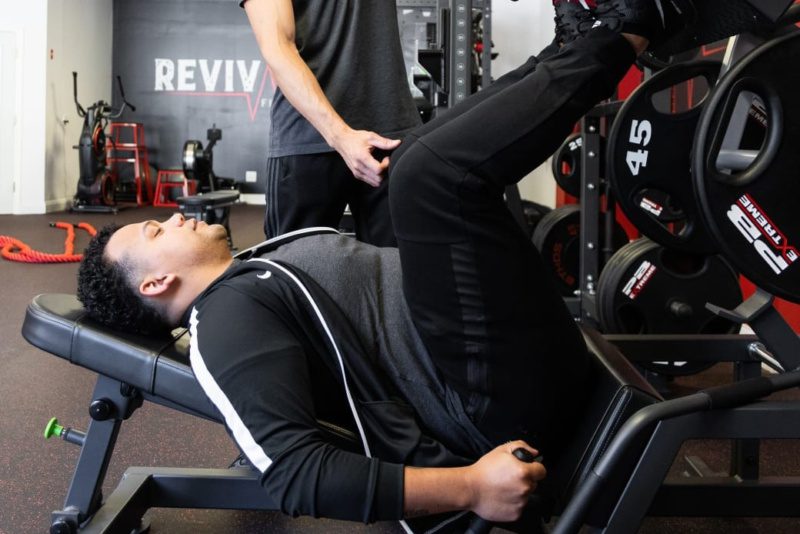You may be tempted to jump straight into your workout, especially on busy days. But skipping your warm-up before a workout is one of the biggest mistakes you can make. A proper warm-up increases performance, prevents injuries, and prepares both your body and mind for movement.
Whether you’re lifting weights, running, or doing a functional fitness session, a few extra minutes of preparation can significantly improve results.
Why Warming Up Matters
A good warm-up does more than just raise your heart rate. It:
- Increases blood flow to muscles
- Lubricates joints and improves mobility
- Activates the nervous system for better coordination
- Prepares the body for specific movements
- Reduces risk of injury by gradually elevating intensity
Functional Training Explained — What It Is and Why It Works
Warming up primes your body for action—and helps ensure your workout is safe and effective.
Static vs. Dynamic Warm-Ups
Static Stretching (Not Ideal Before Training)
Static stretches involve holding a position for 20–30 seconds. These are better reserved for post-workout cool-downs, as they relax muscles and may reduce strength output when done before intense training.
Dynamic Warm-Ups (Best Before Exercise)
Dynamic warm-ups involve controlled movements that mimic the workout ahead. They increase body temperature, improve flexibility, and wake up your neuromuscular system.
Components of a Great Warm-Up
A solid warm-up takes about 5–10 minutes and includes:
- General movement to elevate heart rate (light cardio, jump rope, cycling)
- Dynamic mobility drills (arm circles, leg swings, hip openers)
- Activation work for key muscle groups (glute bridges, planks, band walks)
- Movement prep based on your workout (bodyweight squats, inchworms, push-up walkouts)
Tailor your warm-up to the type of training you’re doing. For example:
- Strength workout: Emphasize mobility and joint prep (hips, shoulders, ankles)
- Cardio session: Use rhythmic dynamic movements like high knees or butt kicks
- Functional training: Include core activation and balance drills
Sample Dynamic Warm-Up Routine (Full Body)
- 2 minutes light cardio (jog, jump rope, bike)
- 10 leg swings (front/back, side to side) each leg
- 10 walking lunges with a twist
- 10 arm circles forward and backward
- 10 glute bridges
- 10 bodyweight squats
- 10 high knees or inchworms
This routine works well before most strength, cardio, or conditioning workouts.
Benefits of Warming Up Before a Workout
1. Better Range of Motion
Dynamic warm-ups enhance joint mobility and muscle flexibility—allowing you to lift deeper, move cleaner, and perform better overall.
2. Increased Strength and Power Output
A properly activated nervous system helps muscles fire more efficiently. You’ll lift heavier, run faster, and reduce awkward movement patterns that lead to injury.
3. Improved Mental Focus
Warming up gets your mind in sync with your body. It gives you space to mentally prepare, review goals for the session, and transition out of daily stress.
4. Reduced Injury Risk
By gradually increasing intensity and prepping the body for movement, warm-ups reduce the likelihood of sprains, strains, and overuse injuries.
Why You’re Not Seeing Results From Your Workouts
Common Warm-Up Mistakes to Avoid
- Skipping it entirely
- Going too fast too soon
- Static stretching before lifting or sprinting
- Doing warm-up movements that don’t match the workout
- Rushing through with poor form
At Revival Fitness, we teach members how to warm up properly for every workout style. Our trainers guide you through a custom prep routine before each session.
Warming Up Is Part of the Workout—Not Extra
We incorporate warm-ups into our personal training and group sessions to make sure every client is primed for safe, effective training. Revival Fitness offers:
- Movement assessments
- Personal training with tailored warm-ups
- Functional training programs that emphasize joint health
- Gym memberships with support from experienced coaches
Train Smarter—Not Just Harder
If you’ve been skipping your warm-up or unsure how to prep, now’s the time to fix it. A few minutes of focused movement can protect your body and elevate your results.
Contact us to learn how to structure your workouts safely and effectively with help from our expert team.
Functional Training Explained — What It Is and Why It Works




